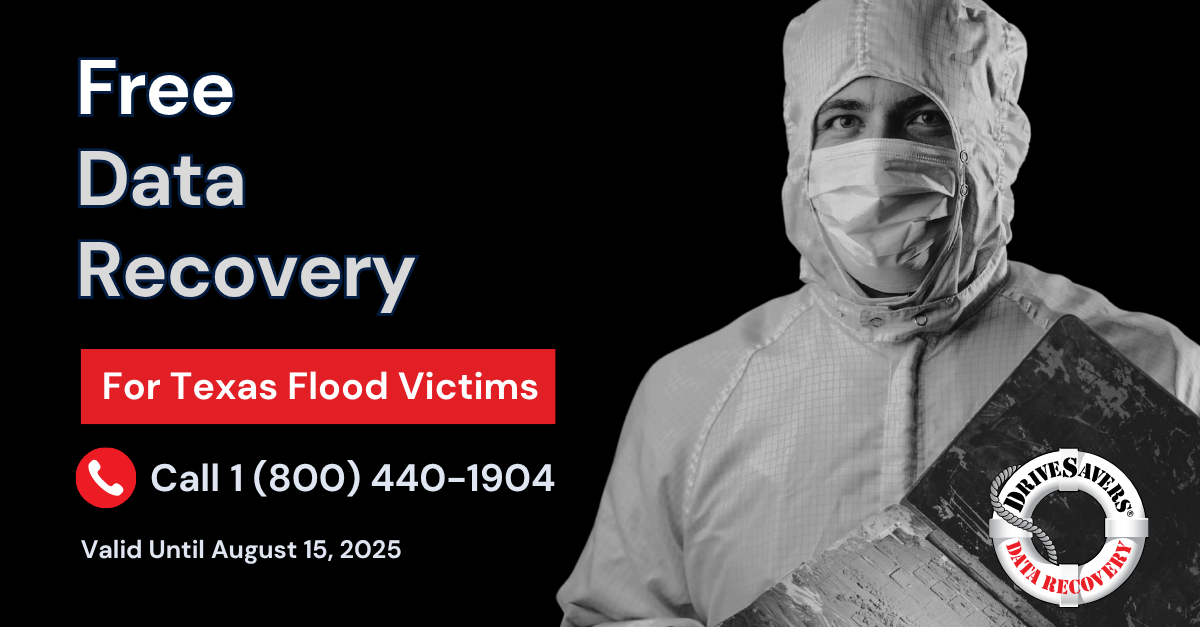Melbourne, October 2, 2025 – In an era marked by rising cyber threats and growing data loss incidents, DriveSavers has officially announced a strategic partnership with Computer Troubleshooters Australia, one of the country’s most trusted IT Franchise service networks. With a focus on servicing the small to medium business market this collaboration enables the Computer Troubleshooters national Franchise network to deliver accessible data recovery solutions to small to mid-sized businesses (SMBs), especially in the wake of escalating ransomware attacks.
Press Release: DriveSavers Offers Safety Tips for Photographers Handling Flash Memory Cards

DriveSavers has completed more flash-based memory recoveries than any other data recovery company
LAS VEGAS, NV (WPPI Conference – Booth # 1151) – FEBRUARY 20, 2012 –DriveSavers Data Recovery, the worldwide leader in data recovery services, is the exclusive data recovery service provider for Wedding and Portrait Photographers International (WPPI) members. Recommended by all storage manufacturers to perform data recovery on their digital media products, DriveSavers has successfully performed memory card data recovery since the inception of flash-based memory technology and successfully completed more flash-based memory recoveries than any other data recovery company.
“Wedding photographers dream of capturing the perfect shot that represents all imagery of a wedding,” said Chris Bross, strategic technical alliance manager for DriveSavers. “With increased use of digital photography and flash memory, a whole new set of potential problems has evolved for photographers. Every photographer should know how to properly handle flash memory cards to prevent potential loss of precious and valuable photographs.”
“One of the most devastating experiences in my career was the time that I lost all the images from a client’s wedding,” said Theresa Vargo, freelance photographer/owner, Theresa Vargo Photography. “It happened when I was transitioning from film to digital photography. After finishing shooting a wedding, I pulled the flash memory card out of my camera to find that all the photos were gone. It was a huge setback for me mentally. I wasn’t sure if I would ever shoot weddings again. Every photographer should know the safety tips for handling flash memory cards. If the unthinkable does happen, knowing a secure, fast and reliable data recovery provider, such as DriveSavers, could save your career.”
DriveSavers has helped photographers with a variety of seemingly impossible problems including the recovery of digital photos from USB drives, hard drives or media cards, as well as the recovery of accounting records, client information, calendars and customer mailing lists. Recently, DriveSavers successfully recovered over 750 images from a digital camera that was submerged in over 60 feet of 46 degree Alaskan waters for 3 days. DriveSavers has recovered data for film and audio studios, photographers, musicians, game developers, web/graphic designers and other creative professionals. Satisfied data recovery customers include companies such as Dreamworks, Lucasfilm, MTV, NBC, Universal Studios, Sony Entertainment and many others.
SAFETY TIPS FOR FLASH MEMORY CARDS
DriveSavers assembled the following tips to help WPPI members properly handle flash memory cards and prevent data loss:
BACK UP YOUR IMAGES – Protect yourself and your irreplaceable images by backing up onto CD/DVDs, tapes, online storage or an external hard drive. This will help guard against data loss when (not if) your hard drive crashes unexpectedly.
TRANSFER YOUR PHOTOS – Copy the image files from the camera’s flash memory to a computer’s hard drive as soon as you can. We recommend not deleting images or reformatting the memory card while it is still in the camera. Wait until all photos are transferred and verified.
FOLLOW INSTRUCTIONS – Take care when removing flash memory from the camera or card reader. Avoid deleting or corrupting images by first using the eject command on the computer or moving the card icon from the desktop to the trash/recycle bin before physically removing the card.
VERIFY THE TRANSFER – Open the images on the hard drive before reformatting the card.
MAKE MORE THAN ONE COPY – Back up your backup media and keep a duplicate off site in a secure location.
PROTECT YOUR FLASH MEMORY CARDS – Use the plastic holder when carrying them around. Simple static buildup can zap the card and make it unreadable. There are other dangers as well, such as breaking a card in your pocket or putting the card, along with your clothing, into the wash.
REPLACE YOUR FLASH MEMORY CARDS – Typically, flash memory cards can be used about 1,000 times before they start to wear out.
AVOID EXTREME TEMPERATURES – Heat, cold and humidity can wreak havoc with digital equipment, especially flash memory.
SPECIAL DISCOUNTS AND BENEFITS FOR WPPI MEMBERS
WPPI members receive a discount and benefits for DriveSavers data recovery services.If the data is not recoverable, members will not be charged a recovery fee for Standard and Economy Services. (For network and multiple drives, there is a minimum discounted attempt charge.)
To learn more about DriveSavers Data Recovery services for digital cameras and our special programs for digital arts, please visit: /devices-supported/digital-cameras/.
About DriveSavers
DriveSavers Data Recovery, the worldwide leader in data recovery services, provides the fastest, most reliable and only certified secure data recovery service in the industry. As the only data recovery company to post proof of annual, company-wide SOC 2 Type II audits and its HIPAA data security compliance, DriveSavers services meet the security protocols for financial, government, corporate and healthcare industries. DriveSavers also adheres to U.S. Government security protocols, the Gramm-Leach-Bliley Act Data Security Rule (GLBA), the Data at Rest mandate (DAR) and the Sarbanes-Oxley Act (SOX). Known for its technologically advanced ISO Certified Class 5 Cleanroom, the company is authorized to open storage devices by all major storage device manufacturers without voiding the warranty. DriveSavers engineers are trained and certified in all leading encryption and forensic technologies. Satisfied customers include: Bank of America, Google, Lucasfilm, NASA, Harvard University, St. Jude Children’s Research Hospital, U.S. Army and Sandia National Laboratories.
###





